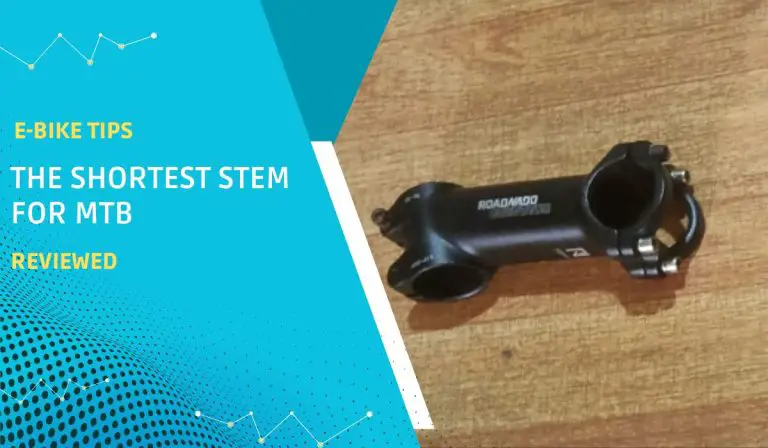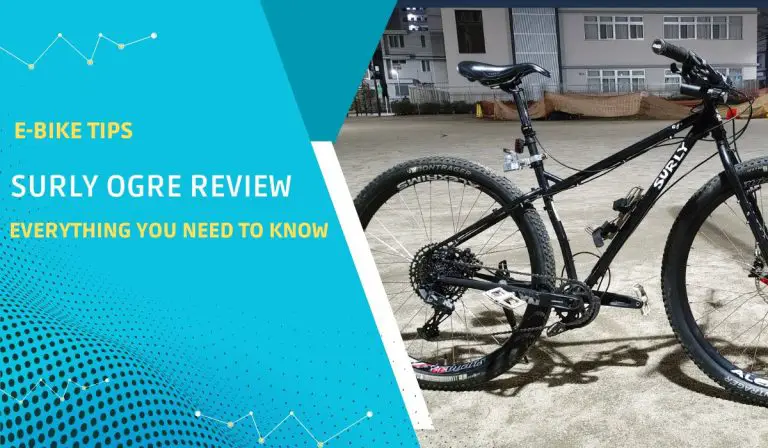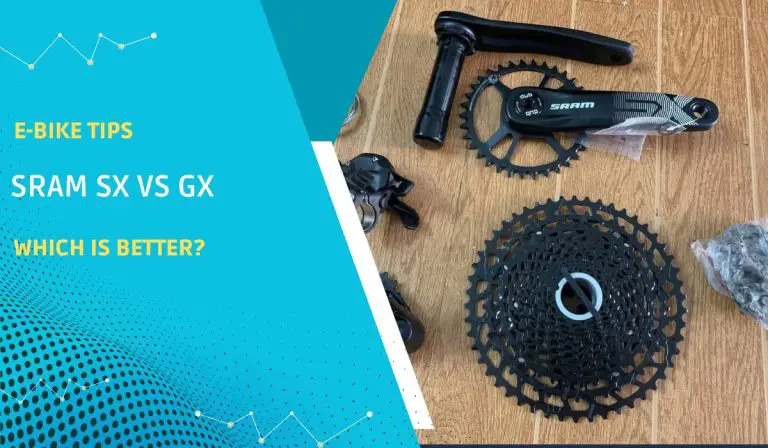A negative stem MTB advantage is that it makes it easier to control the bike, especially on technical terrain. This is because it allows the rider to regain their weight over the rear wheel, improving traction and stability.
If you’ve been sticking with my posts, you’ll notice that I am an avid mountain biker who’s always looking for ways to improve my riding experience. One of my most important factors when mountain biking is good handling and control, especially on technical terrain. From experience, using a negative stem has made a big difference in my mountain biking. I’m able to handle technical terrain more confidently, and I’m able to ride for longer periods without getting tired. If you want to improve your mountain biking, I highly recommend using a negative stem.
In this article, I’ll discuss the advantages of using a negative stem for mountain biking. I’ll also provide tips on choosing the right negative stem for your needs.
Skip To Section Here
Negative Stem MTB Advantage
- Reduced fatigue
A negative stem can help reduce fatigue, especially on long rides. This is because it puts the rider in a more comfortable and efficient position. When you are riding a mountain bike, your body is constantly working to absorb bumps and vibrations. This can put a lot of strain on your neck, shoulders, and back. A negative stem can help reduce this strain by putting you in a more comfortable and efficient position.
- Better weight distribution
A negative stem can help improve weight distribution, handling, and performance. This is because it moves the weight forward, which helps keep the front wheel planted on the ground. For example, a negative stem can help improve the front wheel’s traction, which can be helpful for climbing and cornering.
- increased range of motion
A negative stem can also increase the rider’s range of motion, which can be helpful for climbing and technical riding. This is because it allows the rider to lower their arms, giving them more leverage. For example, a negative stem can help the rider get more power into the pedals when climbing or make sharper turns when riding through technical terrain.
- Improved handling and control
A negative stem makes it easier to control the bike, especially on technical terrain. This is because it allows the rider to get their weight back over the rear wheel, which improves traction and stability. For example, a negative stem can help you keep the front wheel planted on the ground when riding downhill and avoid going over the handlebars.
- Increased stability
The center of gravity is the point around which an object’s weight is evenly distributed. When the center of gravity is lower, the object is more stable. It is harder to tip over an object with a low center of gravity. A negative stem lowers the center of gravity by bringing the handlebars closer to the rider. This makes it easier to keep the bike upright, especially when riding over rough terrain.
For example, when riding through rocks or roots, the rider may need to make sudden movements to avoid obstacles. A negative stem can help the rider make these movements more easily and avoid tipping over. Also, a negative stem can help the rider keep their weight back and over the rear wheel. This is important for maintaining traction and stability, especially when riding downhill.
Disadvantages of Using a Negative Stem MTB
- Reduced visibility
When you have a negative stem, your handlebars are closer to you. This means that your head is also closer to the handlebars. This can make it difficult to see over the handlebars, especially if you are riding in technical terrain where you need to see what is coming up ahead.
For example, if you are riding downhill and there is a sharp turn coming up, you may only be able to see it once it is too late. This can lead to a crash.
To minimize the reduction in visibility, you can use a stem with a shorter length and a shallower negative angle. You can also raise your handlebars. However, it is important to remember that these changes may also affect the handling and stability of your bike.
- Reduced steering control
A negative stem can make it more difficult to steer the bike, especially in tight corners. This is because it moves the handlebars closer to the rider, making it more difficult to make quick movements.
A negative stem can make it more difficult to see over the handlebars. This can be a problem in technical terrain where you need to be able to see what is coming up ahead.
- uncomfortable for some riders
A negative stem brings the handlebars closer to the rider, which puts the rider in a more forward-leaning position. This can put strain on the neck, shoulders, and back, especially for riders who are not used to this position.
The amount of strain put on the neck, shoulders, and back will depend on the length and angle of the stem as well as the rider’s body proportions. Riders with shorter torsos and longer arms may be more comfortable with a negative stem than riders with longer torsos and shorter arms.
How to Choose a Negative Stem for Your MTB
- Consider your riding style.
If you are an aggressive rider who likes to go fast and descend steep trails, then you may want to consider a negative stem with a longer length. This will help you get into a more aerodynamic position and improve your handling. If you are a more casual rider who enjoys cross-country trails, choose a shorter negative stem with a shorter length. This will give you a more comfortable riding position.
- Take into account your body size and height.
A shorter rider will need a shorter stem than a taller rider. This is because a shorter rider will have a shorter reach to the handlebars, so they will need a shorter stem to maintain a comfortable riding position.
- Think about the type of terrain you ride.
If you ride on a lot of technical terrain, then you may want to choose a negative stem with a shorter length. This will help you maintain control of your bike in tight corners and over obstacles. If you ride in more open terrain, you may get away with a longer negative stem.
- Choose a stem with the right length and rise.
The length of the stem will affect the reach of your bike. A longer stem will give you more reach, while a shorter one will give you less. The rise of the stem will affect the height of your handlebars. A stem with a negative rise will lower your handlebars, while a positive one will raise them.
- Your bike’s geometry
Your bike’s geometry will also affect the type of negative stem that is right for you. If your bike has a slack head angle, you will need a shorter negative stem to avoid putting too much weight on the front wheel. If your bike has a steeper head angle, you can get away with a longer negative stem.
Frequently Asked Questions
What is the impact of negative stem MTB on mountain biking?
A negative stem in MTB has a significant impact on mountain biking. It changes the angle of the stem, affecting the handlebars’ position. A negative stem MTB brings the handlebars closer to the rider, which shifts the rider’s weight forward and lower, making the bike more stable. This improved stability is especially beneficial when riding downhill or on technical terrain, as it allows riders to maintain control and maneuverability. Additionally, a negative stem MTB can help reduce the strain on the rider’s back and neck, making for a more comfortable ride.
Should I Consider Using a Negative Stem for My MTB?
Whether or not to use a negative stem for your MTB depends on your personal preferences and riding style. A negative stem may not be necessary if you primarily ride on roads or easy trails. However, if you frequently ride on technical terrain or downhill trails, a negative stem can significantly improve your riding experience.
Remember that a negative stem may require adjustments to your bike’s setup, including the saddle height and handlebar position. You must consult a professional bike fitter to ensure your bike is properly adjusted for the best performance and comfort.
Conclusion
While the negative stem MTB advantage may provide some benefits, such as improved handling and control, it also has potential drawbacks, including reduced visibility and reduced steering control.
Ultimately, the decision to use a negative stem should be based on individual riding style and preferences, as well as the specific terrain and conditions of the trail. Riders should consider the pros and cons before using a negative stem on their mountain bike.





